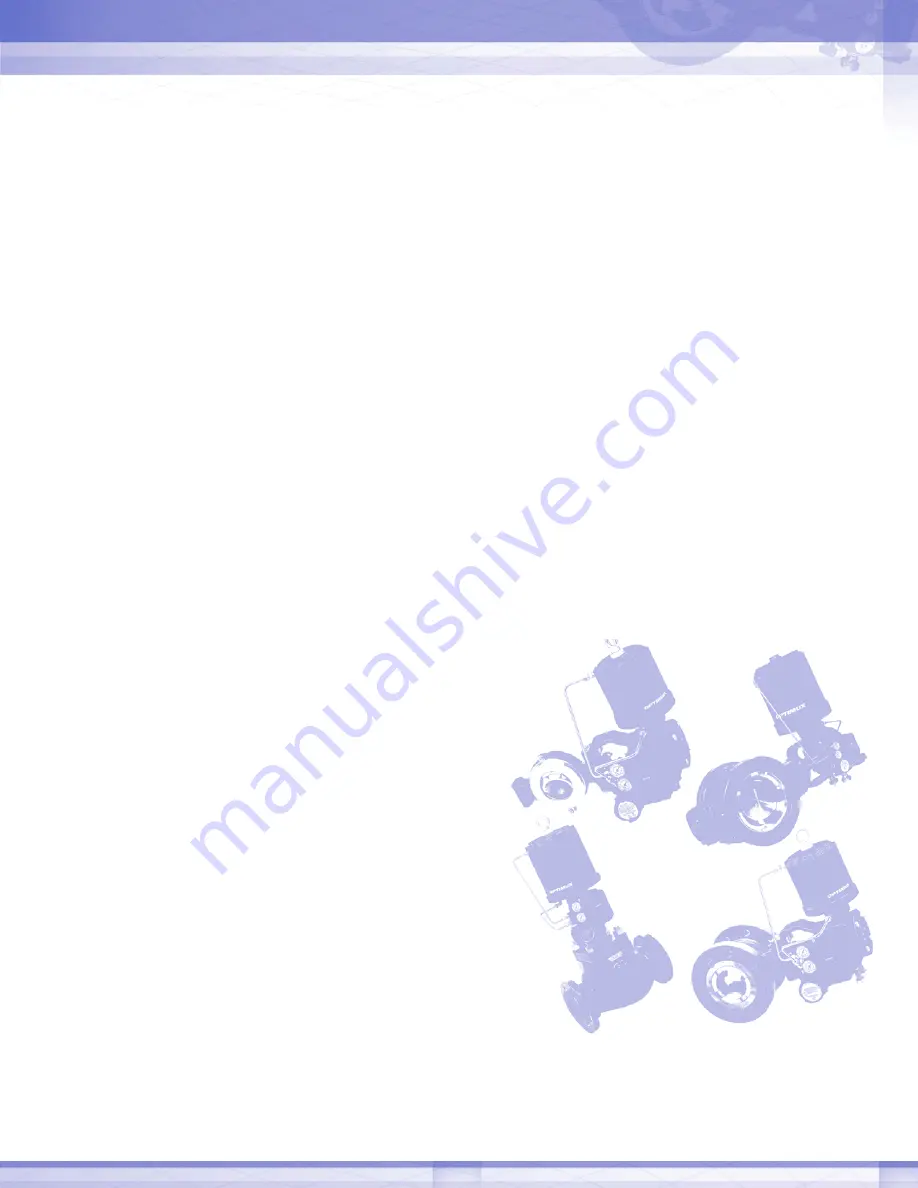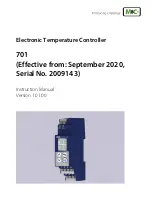
Product Instruction Manual
5
1. Cycle the valve (or mechanical device) to just
beyond the closed position with very low
supply air pressure (10-15 PSI).
2. Turn the stroke stop clockwise (as viewed
from the end) until resistance is felt. Turn the
stroke stop an additional 1/8 turn. Check to
see that the valve is closed on dead center. If
not, adjust the stop until the valve is closed
on dead center.
3. Cycle the valve open. Adjust the other stroke
stop until valve is 90 degrees from the closed
position.
4. Cycle the valve several times to make certain
the position indicator returns to the same
position with each cycle.
5. Tighten the stroke stop jam nuts.
ACTUATOR ACTION REVERSAL
The rotary actuator transfer case allows for four
different mounting positions and for either fail-
close or fail-open air failure operation, without
retubing or changing the fail-safe spring in the
actuator. Before reversing the actuator action,
make sure there is no line pressure in the valve
and support the actuator assembly by the lifting
ring. Refer to Figures 1 and 2 and proceed as
follows:
Note:
Not all positions are available on all
actuator sizes; contact factory if a problem
occurs while reversing the actuator action.
1.
Disconnect the air and relieve spring
compression.
2. Remove the transfer case cover plate bolts.
Carefully slide cover plate off the end of the
splined lever.
3. On older designs with clamping lever arms,
loosen the linkage bolt.
4. Remove bolts connecting transfer case to the
yoke.
5. On older designs with clamping lever arms,
slide the actuator assembly off the shaft. If
necessary, wedge the splined lever arm apart
to loosen it on the shaft spline.
6. Index the valve by manually rotating it 90
degrees. If the valve is closed, rotate it to the
open position or vice versa.
7. Reverse the transfer case on the yoke by
turning it 180 degrees. The yoke side now
becomes the cover plate side and the cover
plate side becomes the yoke side. Since this
changes the direction of the actuator’s
rotation, it may be necessary to change the
mounting position of the valve in line to
achieve the proper orientation.
Note:
Before reconnecting the actuator to the
valve, verify that the valve rotation matches
the actuator rotation and complies with the
air failure requirement.
8. Reconnect the actuator to the valve or
mechanical device. On actuators with
clamping lever arm, center the splined lever
arm and tighten the linkage bolt.


























